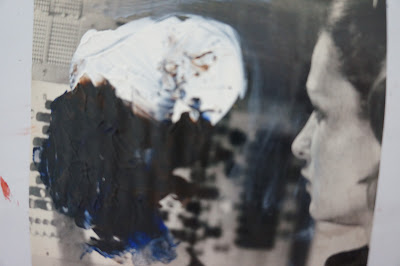Cedar Lewisohn -14/11/12
'Is an artist and curator based in London. Between 2005 and 2011 he worked at Tate, where he curated the exhibition Street Art in 2008 and co-curated the exhibition Rude Britannia in 2010. He also curated numerous large scale public projects for Tate and was assistant curator of the exhibition Dali and Film. In 2010 he co-curated the UK touring exhibition Orbitecture and in 2012 he curated the exhibition Les Fleur de Mal at the BWA Gallery, Wroclaw, Poland. In 2008 he wrote the book, Street Art: The Graffiti Revolution (Tate), and in 2011 his book Abstract Graffiti was published by Merrell.'
Sean Dower -20/11/12
http://www.seandower.com/
Darren Hayman -21/11/12
http://www.hefnet.com/
David Sheppard
Patti Ellis -18/12/12
http://www.saatchi-gallery.co.uk/current/usa_reviews14.htm
'Is an artist, writer, and curator. She has written catalogue texts for museums, publishing houses and commercial galleries including, The Royal Academy, The Hermitage, Gem Museum, Vanabbe Museum, Kunsthalle St. Gallen, Thyssen Bornemisza, and MUSAC. She has worked with The Saatchi Gallery since 1998 as a writer and spokesperson. Ellis has curated 11 international exhibitions in the UK, Finland, Israel, and Ireland, including the British exhibitions for the Tirana Biennale 2001, ArtKliasma Moscow 2003, and the Prague Biennale 2005. She was Specialist Advisor to the Scottish Arts Council from 2007-2010 and is an Artistic Assessor for Arts Council England.'
Personal Tutorial
I was lucky enough to have a personal tutorial with Patti, and was the first tutorial I have had out of all the visiting lecturers. I felt comfortable talking to Patti about my work and she gave me some great feedback about how to develop ideas and I felt she knew what I really wanted to do in my artwork; which gave me the encouragement I needed.
Patti gave me feedback on my strengths- composition within my sketchbooks; this lead onto a discussion about book-making, which gave me an idea for future work and projects such as FMP. She also liked the confessional work I did last year in my Foundation Course and this got me excited to develop this work further this year. Lastly, Patti mentioned my strength in life drawing and also talked about progressing this subject in a confessional way.
Patti recommended an artist for me to research relating to the confessional work I would like to carry on from last year:
Elke Krystufek
Elke Krystufek (1970) is an Austrian self portraitist working in a variety of media including: painting, sculpture, video and performance art.
There are pieces with Krystufek photographing herself in a mirror, becoming her own model.
 |
| 'Replicant Hitler Print' 2000 Print on aluminium |
 |
| 'Les Miroirs d'Elke' |
 |
| 'Ths Is Hardcore' 1998 |
Lecture Notes 'Everything I Know About Art'
- Art is something you do to make life more interesting
- Art is best when it's honest
- Embarrassment is a virtue
- Most people only access the world through media
- Media is instructional about the world
Arthur Hailey
- Formulaic genius (60's)
- Makes instruction manuals glamorous
Benjamin Buchloch- Art Critic
Thomas Hirschhorn- 'consuming/waste' 'basically a gallery filled with piss'
Hyper-realism is a copy for which no original exists.
Performance -'General Idea'
- DIY media
- Panto criticism
- Institutional critique
Joseph Kosuth
- Uses theory for stupid purposes
- Proves the bloody obvious is super intelligent
Advice:
- Do shows when you're a student-just like a real artist
- Start a gallery or a zine or a blog
- Go and see shows and sneak into PV's
- See and be seen (the more you see, the better you look)
Post-Modernism
1940's/60's
Micheal Graves
Claes Oldenberg
Piero Manzoni 'Fluxus' 1961
John McCracken 'Black Cube' 1971 -Liam Gillick
Malevich 'Black Square' 1915 -Jeddediah Caesar -Reference to 'Black Cube'
Anti-Modernism
Thomas Heatherwick
Anthony Gormley
Mike Kelley 'Petting Zoo' 2007
Zhu Yu 'Eating People'
Sherne Levine
Khristian Hornsleuth
- Christo 'Wrapped Coast' 1968-9 vs Damien Hirst
- Allan Kaprous 1967 vs Matthiew Leonetti
- Hanne Darboven vs Mike Kelley
- Jenny Holzer vs Banksy
- Robert Rauschenberg vs Stelarc
Problem: What art is supposed to be versus what art should be.
'I Hate You in June' -a show about dating and breaking up Ein Harod Museum, Israel.
University Sample Lecture
Modernism
Invention of Photography to 1960's
Miles Vander Rohe
Mark Rothko
Giacometti
El Lissitzky
Josef Albers
Jackson Pollock












































